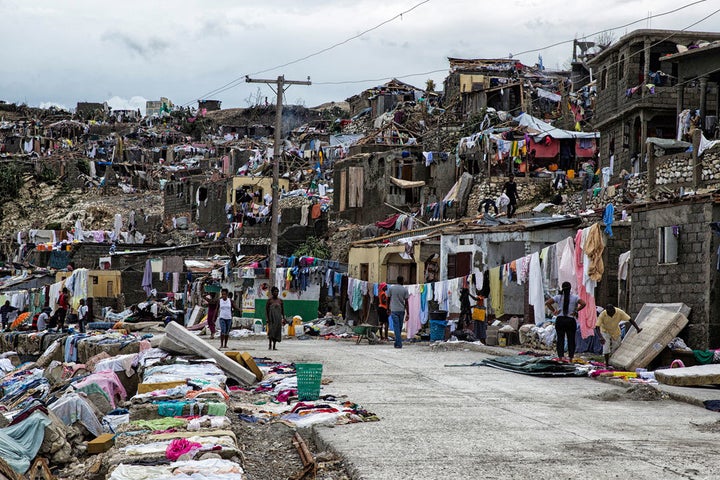
The Caribbean region, including Haiti, is preparing for the arrival of Hurricane Irma. The region is prone to such climatic events. Shown here, a street in the town of Jeremie, which Hurricane Matthew passed through in October 2016, leaving a trail of destruction.
The Atlantic hurricane season always poses a deadly threat to some of the most densely populated islands and coastal regions in the world but this year seems destined for the history books.
The losses from Hurricane Harvey could turn it into the most expensive single weather event in U.S. history as the country prepares now for the likely arrival of Hurricane Irma and sizes up the possibility of a hit from Jose, a newly formed tropical storm in the mid-Atlantic.
Memories are still fresh of the loss of 600 or more lives in Haiti last October from Hurricane Matthew, which made landfall as a category 4 and caused enormous economic losses to the impoverished country still recovering from the 2010 earthquake.
Irma is the strongest hurricane ever to form in the Atlantic; warnings have been issued for Florida, parts of Cuba, Haiti, the Dominican Republic and many small island developing states in the Caribbean and, given the size of the threat, there must be a raised concern for the possible loss of life on low-lying coastlines exposed to winds of over 280 kph and significant storm surge.
There is nothing like the threat of a major life-threatening disaster to focus attention on disaster management and the greater challenge of how to make progress on eliminating the underlying drivers of disaster events, which is a paradigm shift backed by UN Member States when they adopted the Sendai Framework for Disaster Risk Reduction two years ago.
Key targets outlined in that agreement are to reduce mortality and to reduce the numbers of people affected by disasters by the year 2030 in support of the overall 2030 Agenda for Sustainable Development.
The clear and present danger posed by Hurricane Irma is not from the natural hazard itself but rather from the quality of the built environment which lies in its path and the potential for intensified damage and loss because of rising, warming seas linked to climate change.
This simple truth highlights the importance of reducing disaster risk, setting standards for resilient infrastructure, applying appropriate building codes and land use regulations, restoring and preserving protective eco-systems, and putting in place strong institutions for good risk governance.
It is clear that poverty is a key driver of disaster risk in sudden on-set events like a hurricane. Though excellent work was done in Haiti last October in disseminating early warnings, many lives were lost and large parts of the subsistence economy were destroyed.
It’s a vicious circle. Poverty is a key cause of mortality in events on the scale of Irma as it is those living in marginalised areas who are most vulnerable to disaster impacts. Disasters also worsen poverty making it more difficult to eradicate, a challenge which is the number one Sustainable Development Goal.
Every effort must be made in the coming days to ensure that warnings reach the most marginalised and vulnerable. These usually include women and children, people living with disabilities, older persons and people who can be otherwise marginalised and left out of mainstream disaster management planning.
Hurricanes take a heavy toll and highlight the growing complexity of extreme weather events in areas of the world affected by climate change, poverty, deforestation, and limited institutional capacity for preventing and reducing disaster risks.
Saving lives must be of the uppermost concern in the coming days. In the aftermath, the challenge as always will be to build back better and avoiding the re-creation of risk, especially in countries where economic losses will be significant.
Robert Glasser is the UN Secretary-General’s Special Representative for Disaster Risk Reduction and head of the UN Office for Disaster Risk Reduction
